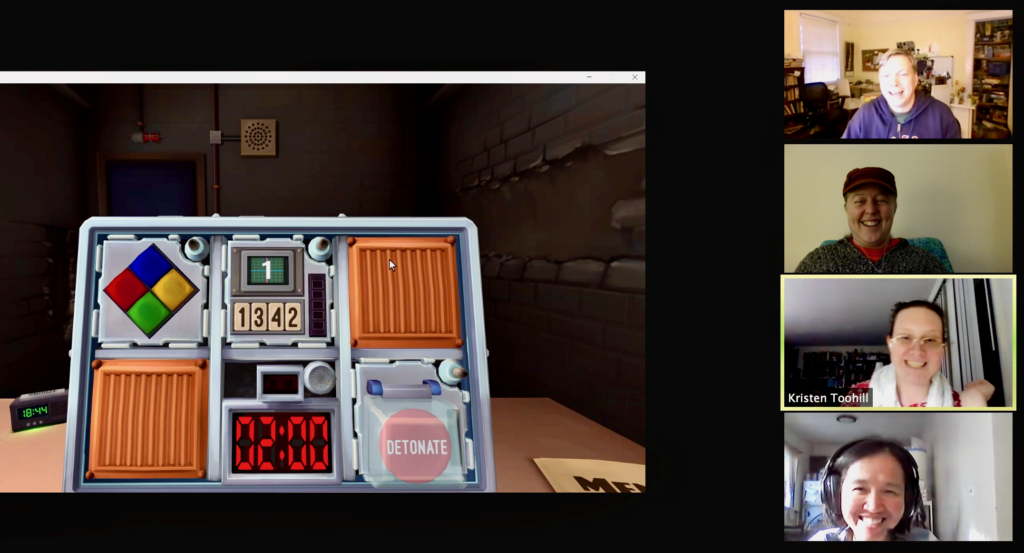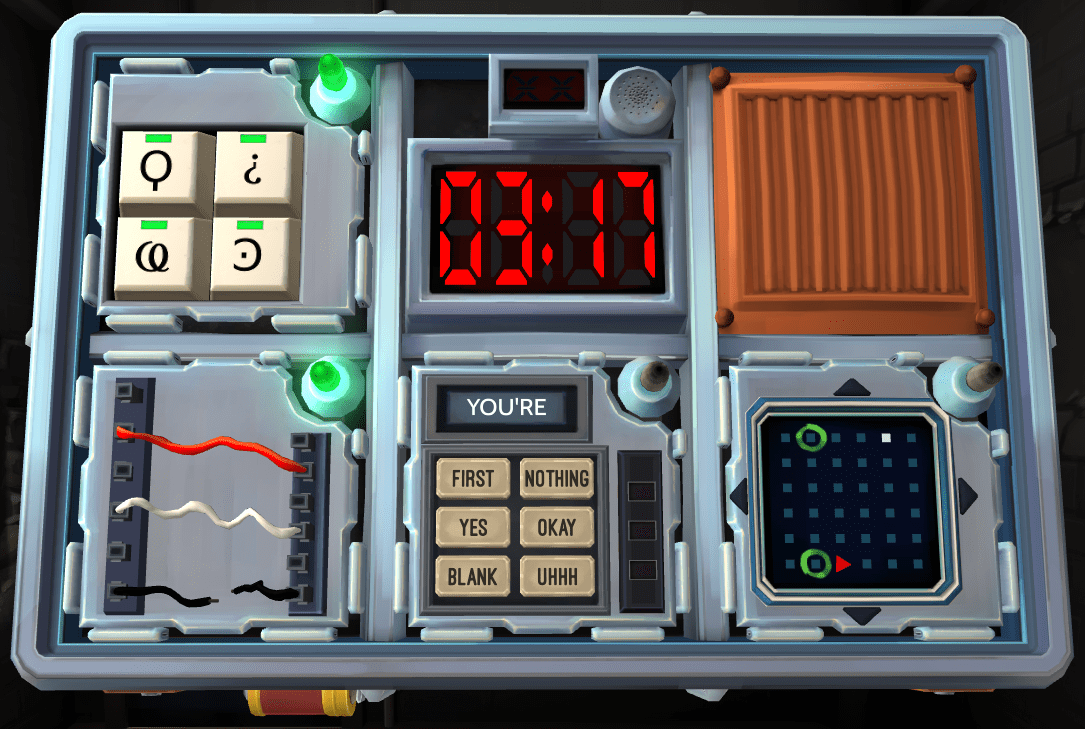
How a Bomb-Defusing Game Can Boost Communication
Keep Talking and Nobody Explodes! Find out how a fast-paced, exciting game is the perfect way to boost your team’s communication skills.
Time Is Ticking…
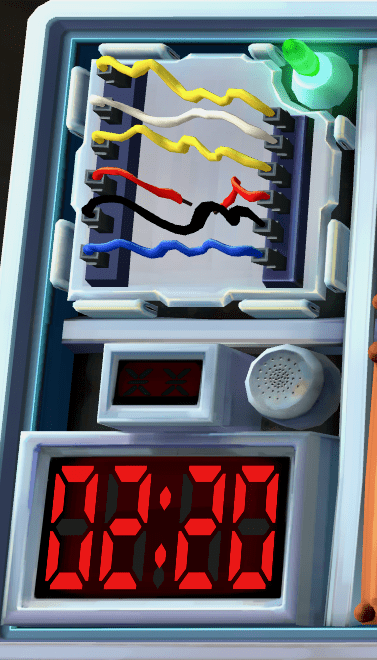
“Okay… so you see three wires–a white one, a red one, and a yellow one?” the expert asks, scowling as they consult their manual.
Looking at the screen, the bomb defuser answers in the affirmative. “Yeah—but the white one is last. I have 30 seconds left.”
The expert smiles—they’re going to make it! “Alright! Cut the…white wire!”
A soft click emanates from the pretend bomb in the defuser’s hands. “YES! We did it! Go team!”
Keep Talking and Nobody Explodes
Keep Talking and Nobody Explodes is an award-winning party game created by Steel Crate Games. It puts your team’s communication skills to the test in a (pretend) high-stakes scenario. Alone in a room with a fake bomb, the “defuser” can see the bomb and the complex modules that make it up. However, they have no way to know how to defuse it. In another room—and in radio contact with the defuser—the rest of the team has access to the intentionally obtuse Bomb Defusal Manual…but they can’t see the bomb. The whole team must rely on their communication skills to relay critical information back and forth between the defuser and the experts with the manual. And they can only relay critical information, because the clock is ticking!
Communication & “Fun Stress”
Keep Talking and Nobody Explodes offers a window into how you and your team communicate under pressure, in a safe and fun way. The Happy Brain Science team gave it a try during a recent virtual game night. Scott Crabtree described the experience this way:
I noticed how the game was designed to cause increasing stress—but because it was “just a game,” it was fun stress. Even so, the stress made me resort to typical stressed behavior, such as talking a lot (too much!). But again, because of the safety the game provides, others and I were able to see our behavior in a more light-hearted way…yet take lessons that could definitely apply under truly stressful situations. Learning about myself has never been so fun!
We all know what it feels like to be under pressure at work, and to resort to our instinctive—and sometimes unhelpful—responses. In high-stakes situations in which we need to communicate effectively with others, how do we make sure that we’re helping the other person more than we’re hurting them? How do we make sure that we’re giving those around us what they actually need instead of what we (or they) think they need?
In short: How do we learn how to help?
I’m Helping!
The book Helping: How to Offer, Give, and Receive Help—written by modern grandmaster of organizational development Edgar Schein—seeks to answer these questions and more. How do we provide help that is helpful instead of unhelpful? How do we ask for help in a way that makes it more likely that we’ll receive what we need? And what skills, knowledge, or abilities are key to helping?
Schein starts the book with a story. One day, a woman stopped him to ask how to get to Mass Ave (a main street that runs through Boston and the surrounding area). Before offering her directions, he asked a question: Where are you trying to go? Upon learning that she wanted to get to downtown Boston, he explained that the street she was currently on would take her there (not Mass Ave). Had Schein “helped” without getting clarity about the big picture, the woman would have likely wound up having to backtrack.
Assumptions Are Explosive
Keep Talking and Nobody Explodes provides a high-octane, hands-on experience of this kind of questionable “helping.” Assuming that you already know what information your teammates need—and feeding them a stream of information that “helps” them—can prove…well, explosive.
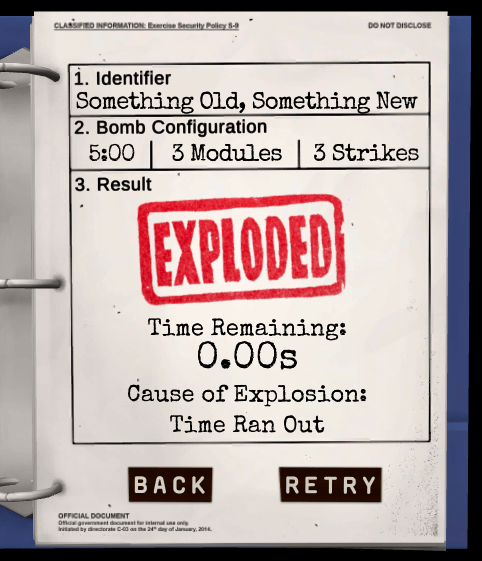
As Kim from Happy Brain Science put it:
What’s the #1 rule of effective communication? (Come to think of it, there are probably a few…) But one of them would have to be: “Don’t make assumptions.” Case in point: when you’re giving someone bomb-defusing instructions—and the information doesn’t really make sense to you or the other person—it would help to not assume that every instruction module is a 1-pager. Boom! Lesson (hilariously) learned.
Thankfully, since Keep Talking and Nobody Explodes is just a game, the team had an opportunity learn and try again, thus applying the solution Schein suggests for providing help that actually helps: humble inquiry.
The Space Between
According to Schein, in order to actually be helpful, “What is crucial is not the content of the client’s problem or the helper’s expertise, but the communication process that will enable both to figure out what is actually needed.” The defuser has access to all the info that can be gleaned from observing the bomb. The experts with the manual can see every possible permutation of bomb modules, with details about how to defuse any given piece of the bomb.
The challenge doesn’t rest with either the defuser or the experts: it’s in how they communicate with each other. If the bomb defuser assumes that they know the information the experts need and brain-dumps it without checking in—BOOM! Game over. If the experts assume they know the solution and don’t check the specifics with the defuser, the same thing happens—whoops, wrong wire! Game over again.
These pretend-tragedies can be avoided if both the defuser and the experts ask questions about what the other needs, engaging in what Schein calls humble inquiry.
Humble Inquiry
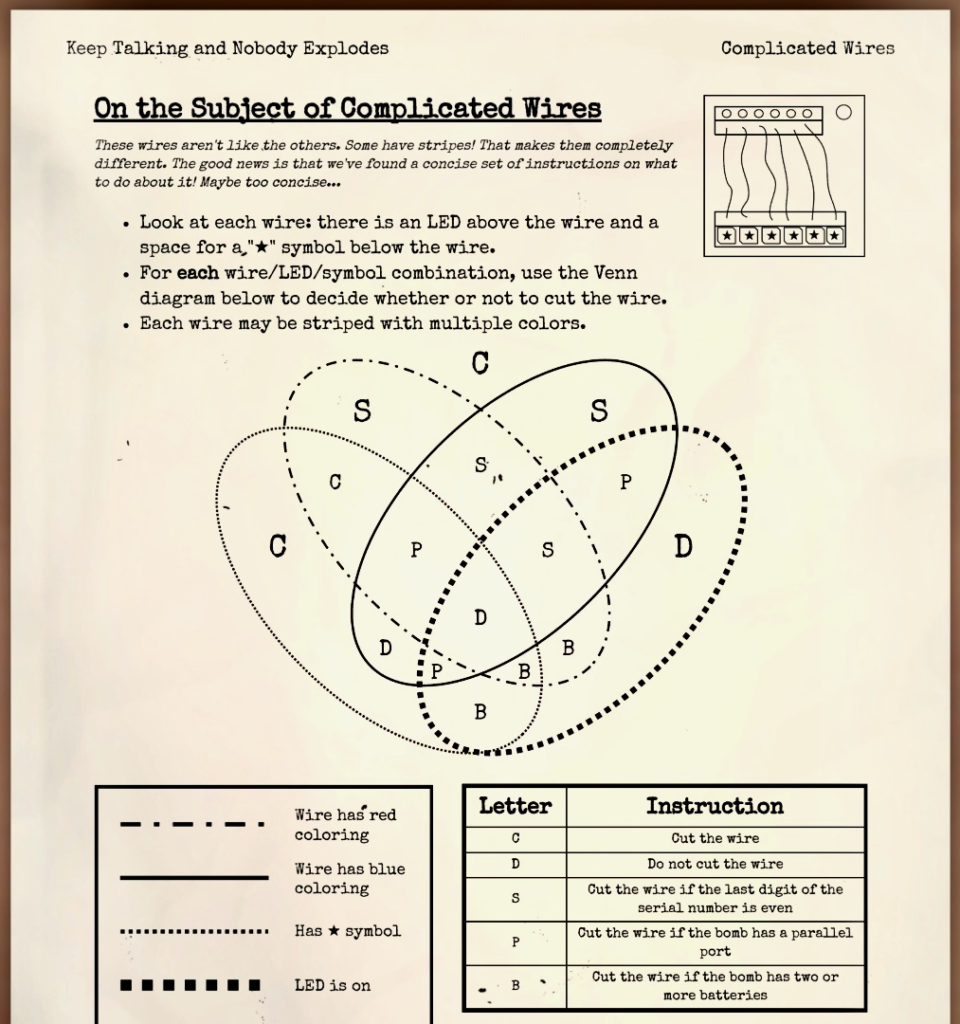
Schein says humble inquiry can “best be described as accessing your ignorance and, because it is genuine inquiry, it is appropriate to call it humble.” To help each other, both parties must suspend their assumptions about what they think the other one needs and “have enough self-insight to be able to make a judgement based on what the client has actually said, not on some intuition that the helper might have based on his or her own experience.”
Questions such as Can you tell me more? and What would you like me to do? and What do you need to know? can be critical. These questions come from a place of not knowing, using humility to gather more information so that you can best help the other person…which allows them to help you in turn!
Communication for the Win
At Happy Brain Science, we had a blast playing Keep Talking and Nobody Explodes together (pun 100% intended)! At first, we all fell into the trap of thinking we knew what the others needed and ran out the clock by providing too much irrelevant information. Fortunately, since games make failure fun—and allow us to quickly dust ourselves off and try again—we were able to take a step back and learn from our failures. After our first explosive ending, we started using humility to ask each other how we could help, paring down the information exchanged to what was really helpful. Last (but not least), we figured out how to transfer this knowledge to real work problems: when the going gets tough, we’ll slow down, take a breath, and ask questions. We’ll tap into our humility and solicit more information before we assume we know the “right” answer.
Thank you to Kristen for this post! For more about how games can enhance workplace communication—including great reasons to play games with colleagues—please check out the book she and Scott recently published.
Meanwhile, we’d love to hear your tips for fun ways to improve communication among members of a team. Thanks for commenting below, connecting with us through any of our social media channels, or contacting us here.
